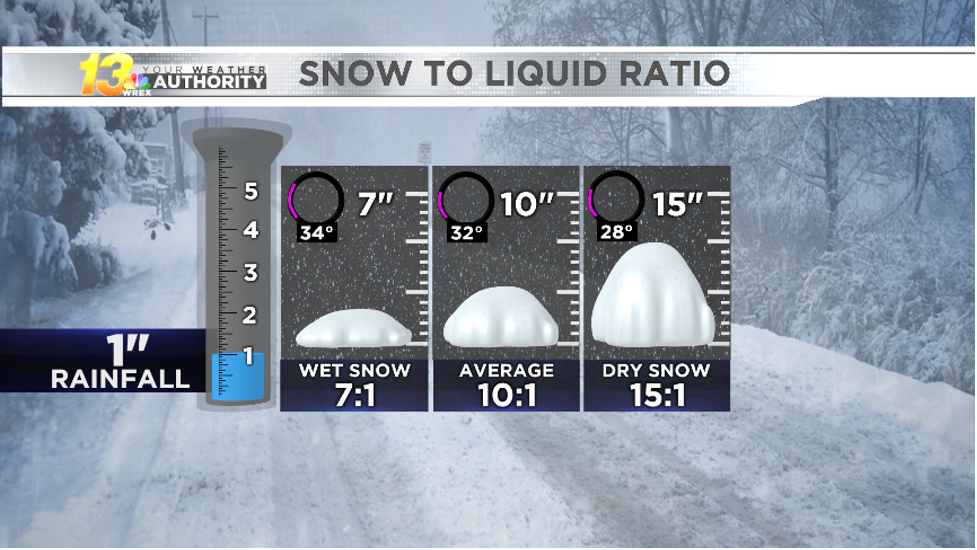Three Ways to Accurately Measure Snow
“Winter Storm Watch,” says your favorite weathercaster at 6 p.m. “We’ve got heavy snow in your Friday forecast.” Now let’s fast-forward to Saturday morning — the snow has come and gone, and your local TV station is reporting record snowfall. But how much did you get?
Here we will explore the proper, endorsed way the National Weather Service measures snowfall. Who knows? Maybe you will post your “snow inches” report on social media, and your local weatherperson will mention it on-air!
Where to Measure Snowfall
It may seem like a no-brainer to measure snow, but if you want an accurate reading it’s not as simple as thrusting a ruler into a backyard of frozen whiteness.
Take a site survey of your yard or lot. Look for an open area to measure the snow, away from any trees as much as possible. Keep in mind that snow often falls during breezy weather so your measuring spot should be at least eight feet away from your home or any outbuildings.
Snowfall Measurement Methods
There are several methods you can use to determine how much snow piled up in your yard last night.
Snowboard Method
The snowboard is the most accurate way to measure snow. A snowboard should be a flat piece of wood at least 1/4 inch thick and 1-to-2 feet square; wood is preferable to plastic or metal due to its thermal tendencies. Place it level on the ground at a suitable site in your yar . You may wish to place several snowboards around a larger property for best results.
Mark the location of the board with a flag or stake because it may be difficult to find after a heavy snow, especially if there are drifts. After the snowfall ends:
- Push the measuring device (a ruler or yardstick is best) straight into the snow at a right angle to the ground, and gently but firmly push all the way down.
- Note the depth of snow on the ruler or tape measure to the nearest eighth of an inch. For a big snowstorm, you might want to take measurements every six hours and record each observation to give you the storm total amount.
- Sweep off the snowboard between measurements and after the storm ends.

A snowboard offers these advantages:
- The snowboard insulates against warm ground melting the snow.
- The snowboard keeps fresh-fallen snow from getting mixed up with older snow cover.
- You have a clean, consistent spot to measure, away from obstacles.
There are several methods you can use to determine how much snow piled up in your yard last night. Aside from the tried-and-true method of a snowboard, there are other options, too.
Snowboard: Plan B
If a snowboard is not at hand, other options are available. You can use a picnic table top or elevated deck to measure. The roof of a vehicle works decently, but it may be difficult to reach over the top to accurately measure; also, some of the snow could blow off, reducing accuracy. A less precise option is a straight measurement over grass-covered ground. This is a “better than nothing” approach because warmer ground temperatures may melt the bottom of the snowpack, giving you a lower than actual snow depth reading.
Snow Gauge
A snow gauge is a variation of a rain gauge adapted for cold-weather use. A large, graduated cylinder is mounted on a fence or pole with the top open. Snowfall accumulating inside can be easily viewed and measured using this arrangement. Snow gauges have challenges: accuracy will suffer when it's windy or when there is a mixture of rain, sleet, and snow.
Liquid Equivalent Method
Snow will melt into water above 32 °F (0 °C); you can convert captured snow to liquid to get a decent idea of how much rain would have fallen. Take a cylindrical rain gauge and press it into the snow upside down. Alternatively, use an empty can or other cylindrical container. Then, turn the container upright and bring it inside. Once the snow melts, you can measure the approximate depth of the water, which converts to the liquid equivalent.

A general rule of thumb is that 10 inches of snow equals one inch of water, but this ratio can vary widely. Typically, a few inches of heavy, wet snow might equal an inch of water, while dry, powdery snow might have a 20-to-1 ratio. Automated rain gauges like those found in AcuRite Iris™ and Atlas™ model weather stations offer a digital display, and they provide a very precise liquid equivalent measurement once the snow melts.
Not a “Flaky” Deal
Snowfall measurement is important data for the weather community. It helps determine how much water will run off when the snow melts, and it greatly impacts temperature forecasts for a wide range of travel concerns. The data is very helpful to the NWS and also to local TV stations. It’s also fun to track how much you get when a big storm comes through!
What is the biggest snowfall you’ve ever experienced? Share your stories in the comments below!
Steve LaNore is a Certified Broadcast Meteorologist with more than 30 years forecasting and technical experience. He has provided meteorological consulting for everything from insurance adjusters to court cases and is a nine-time award winning author and broadcaster. LaNore has authored two books available on Amazon. He resides in north Texas near beautiful Lake Texoma.






